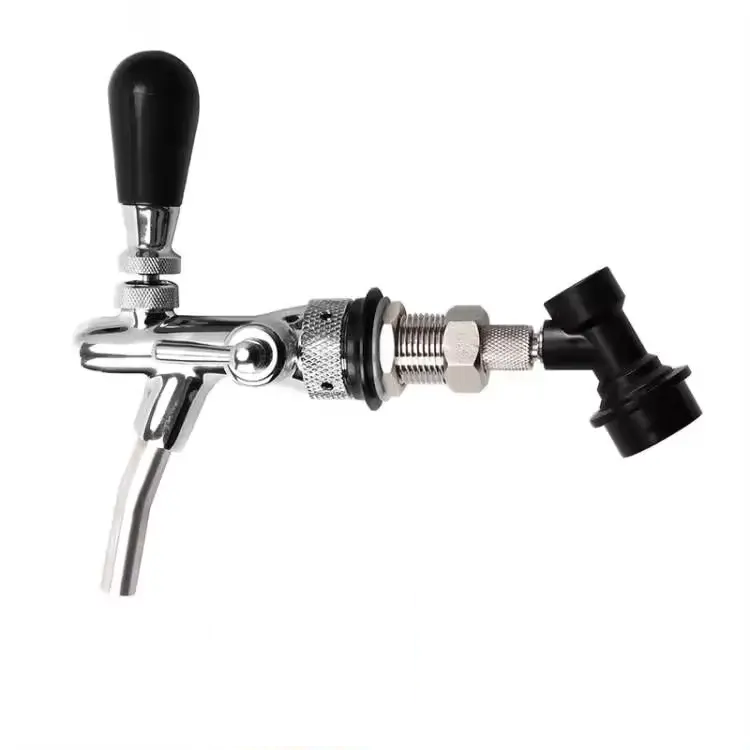Secondary fermentation in a soda KEG
Secondary fermentation in a KEG saves a lot of time and labour when cleaning, filling and corking bottles.
It is also possible to work with sugar or wort to add carbon dioxide to the beer. It is also possible to force carbonate the beer in the KEG by adding technical CO2.
The following accessories are required for secondary fermentation in the Soda-KEG
- Soda keg pressure keg
- CO2 bottle
- Pressure reducer
- Bung valve
- CO2 connection + hose
Filling the keg
When filling, make sure you work as cleanly as possible to avoid infection. Spray the keg lid and the connections with alcohol or a disinfectant before filling.
If you are filling your keg without pressure, this can simply be done through the keg opening. We recommend using a hose that has been disinfected and reaches to the bottom of the keg to avoid unnecessary oxygen ingress.
If you are filling your keg under pressure, it must be pressurised. Firstly, the pressure in the filled container must be determined using a bunging device. Depending on the hose length and filling speed, the empty KEG to be filled must have slightly less CO2 pressure than the filled container.
A CO2 cylinder with a pressure reducer is connected to the filled container in order to keep the pressure constant and "push" the liquid around. A bunging device, such as the Spundy (5016419), is connected to the empty container to keep the pressure constant during filling.
Forced carbonation
To carbonate your beer without sugar or wort, you can connect it to a CO2 source. You will need a CO2 cylinder and a pressure reducer for this.
Forced carbonation works best when the carbon dioxide is pressed into the keg via the epee. This allows the CO2 to "bubble up" the beer and mix it better.
As the keg is sealed and the pressure cannot escape, the carbon dioxide will bind in the beer.
The pressure to be set depends on the temperature of the beer and the desired carbon dioxide content. The colder the beer, the less CO2 is required.
The secondary fermentation keg must be constantly connected to the CO2 source during the period of forced carbonation.
It is highly recommended to put a spundy on the soda keg in order to be able to monitor the pressure increase.
Calculators for determining the required pressure depending on the temperature can be found online.
Natural carbon dioxide has a "finer perlage" than technical carbon dioxide. The carbon dioxide bubbles are therefore smaller and finer with natural CO2, which provides a better mouthfeel.
By combining natural and technical carbon dioxide, you can always achieve exactly the desired carbon dioxide content with a pleasant mouthfeel.
Pressing
The transfer of beer from fermentation vessel to keg or from keg to keg is carried out using filling adapters and the addition of CO2.
This process is suitable for hop tamping or tamping with wood chips, for example, in order to be able to separate the beer from these raw materials again.
The principle is the same as for "filling the keg under pressure". Firstly, the pressure in the filled keg must be determined using a bunging device. Depending on the hose length and filling speed, the empty KEG must have slightly less CO2 pressure than the filled container.
A CO2 cylinder with a pressure reducer is connected to the filled KEG to keep the pressure constant and "push" the liquid around. The bunging device is connected to the empty KEG to keep the pressure constant during filling.
-Jan Dubenkropp














